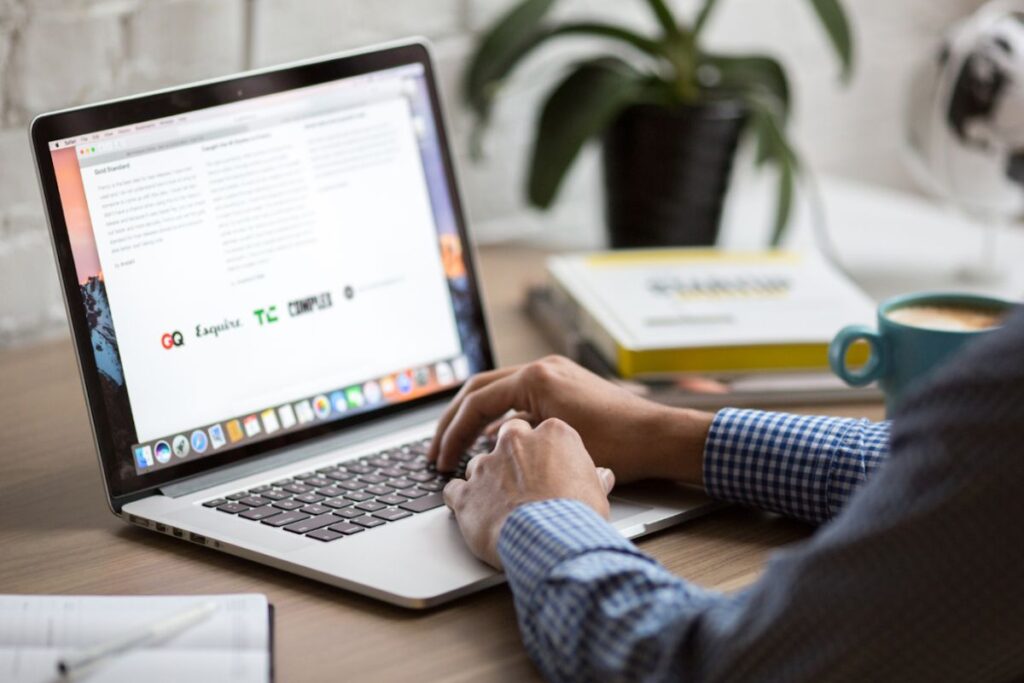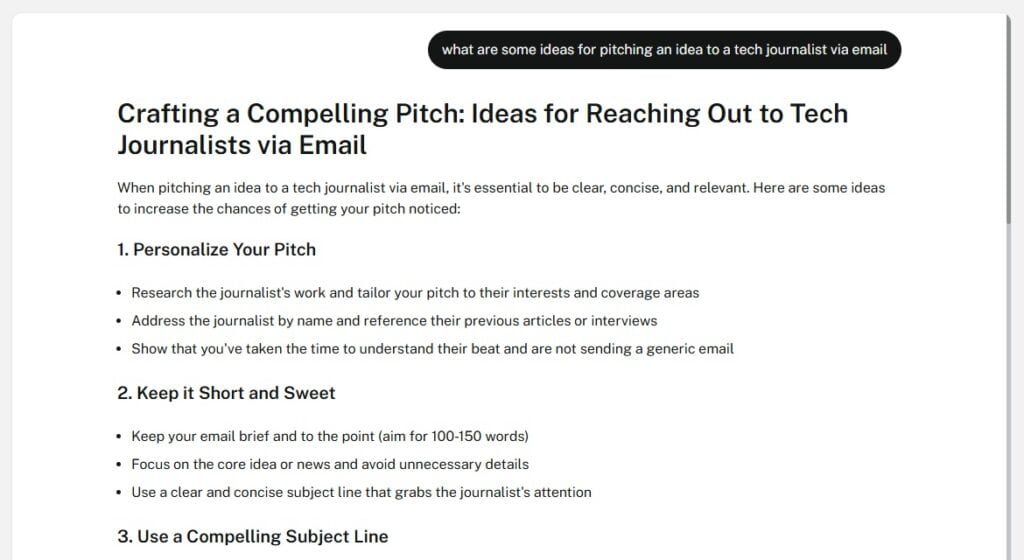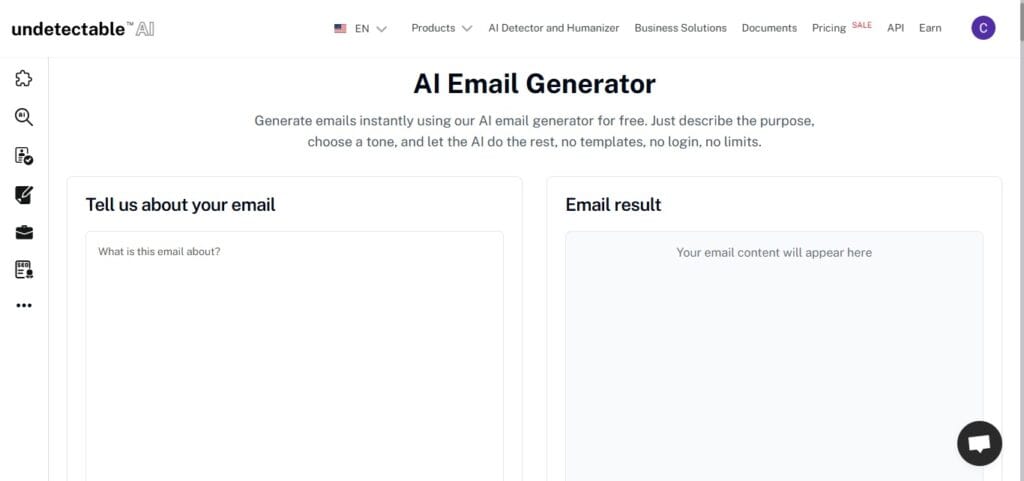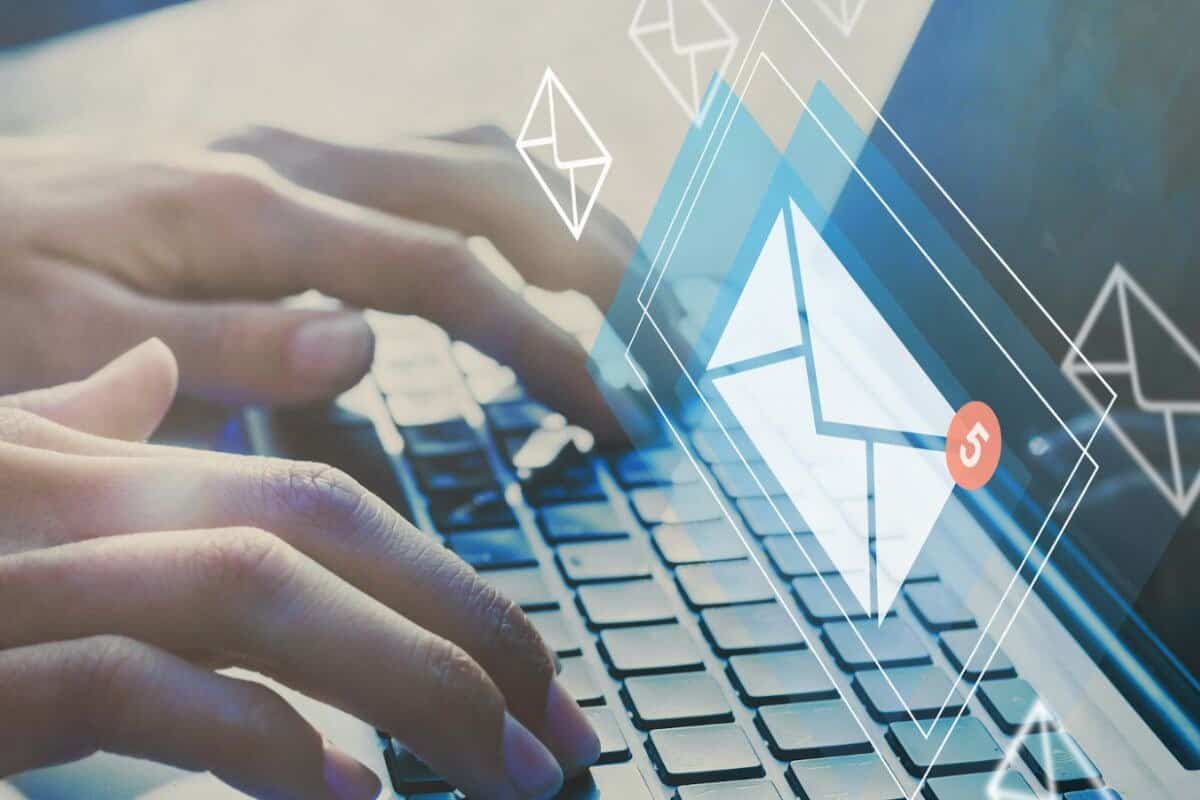The best way to think of your self-introduction email is like a digital handshake. It should be short, it should be confident, and most importantly, it should make a good first impression.
However, knowing what a good introduction email is and actually being able to write one are two completely different beasts.
That’s why, in this guide, we’re sharing everything you need to know about how to introduce yourself in an email… so you can actually get the response you’re looking for.
Key Takeaways
- Think before you write! You can write a better email when you have a clear understanding of what you’re writing about and who you’re writing to.
- Treat your subject line like the main heading. It should be short, clear, and interesting.
- Don’t talk about yourself too much. The best introduction emails are written to connect with your recipient, not promote yourself.
- Generic, copy/paste emails are easy to spot in the wild, not to mention they get ignored. It’s good to use a template, but make sure to personalize your email to your audience.
When You Need a Self-Introduction Email

There are plenty of times in life when you’ll need to introduce yourself via email.
No, writing introduction emails isn’t fun. And no, you may not get a response.
But you still have to do it if you want to make connections and open yourself up to new opportunities.


Never Worry About AI Detecting Your Texts Again. Undetectable AI Can Help You:
- Make your AI assisted writing appear human-like.
- Bypass all major AI detection tools with just one click.
- Use AI safely and confidently in school and work.
Here are a few scenarios where a solid self-introduction email comes in handy:
- Applying for a job
- Asking for something
- Connecting with a potential client
- Following up after an event
- Pitching an idea
In all of these situations, your introduction email is a starting point for a meaningful connection.
So it’s important to really nail it!
Before You Write: Know Your Purpose and Audience

If you feel a bit intimidated and don’t know how to introduce yourself in an email to someone you’ve never met, this is the place to start.
First, get clear on:
- Who you’re writing to
- What you want to get out of the connection
If you don’t make a conscious effort to think about these two points, you’re more likely to write an email that gets completely ignored.
Start by asking yourself: What am I trying to achieve with this email?
The answer to this question will guide your tone, the level of detail in your email, and the way you position yourself.
Next, do some research on who you’re sending your email to.
Understanding their role, their communication style, and even their current priorities can help you create an email that they’ll actually pay attention to.
During this reflection and research phase, it’s worth using an AI chatbot (like our own AI Chat) to brainstorm ideas.
This can save time and also provide you with some different angles you may not have thought of.
For example, here are some ideas (and best practices) for pitching an idea to a tech journalist via email.

Doing a quick search like this can help you send an email that’s more personal and relevant to your recipient.
Subject Line Tips
Your subject line is the very first thing your recipient sees. And in a lot of cases, it determines whether an email even gets opened in the first place.
Here are a few examples of what to aim for.
| Subject Line Examples | |
| Instead of this… | Try this! |
| Job application | [Your Name] / Application for [Job Role] |
| About me | Quick hello from [Your Name] at [Your Company] |
| Follow-up | Following up after [name of event] / [Your Name] |
Try to think of your subject line like it’s a headline for your email. It should capture attention. But it should also give a little preview of why you’re getting in touch.
How to Start the Email
If you’re unsure how to formally introduce yourself in an email, this section is for you.
Experts at Indeed recommend a personalized greeting, making sure to match the level of formality appropriate for your recipient.
Common greetings for professional or unfamiliar contacts include:
- Dear [First Name] [Last Name]
- Dear Mr./Mrs./Ms. [Last Name]
- Hello [First Name]
- Greetings
- Good morning/afternoon
For more casual or familiar contacts, these greetings also work:
- Hi [First Name]
- Hey [First Name]
- Hi [First Name], hope you’re having a great week/weekend!
After your greeting, make sure to say your name and then immediately state why you’re reaching out.
This helps your reader quickly understand the context and makes your email feel intentional.
Pro Tip: It’s not all about you. Make sure to reference something specific to your recipient’s work or project. This shows them you’ve done your homework. And a little flattery (as long as it’s genuine) never hurts.
The Self-Introduction Paragraph
After your greeting, it’s time to actually introduce yourself.
For this section, it’s important to be clear and concise. Yes, you can say a bit about yourself (it is an introduction after all).
But nobody wants to read your entire life’s story either.
Start with the basics: your current role (or what you’re studying), what you do, and how that directly connects to your recipient’s interests.
The focus should shift from “here’s who I am” to “here’s why this matters to you”.
Try to keep this section trimmed down to around three to four sentences max.
If you know the message you want to convey but struggle to get the wording just right, the AI Email Generator can help.

It quickly creates friendly, well-structured self-introduction emails that are tailored to your goals and audience.
Just input a few details—like your role, purpose, and tone—and it generates a clear, confident email that makes a strong first impression without sounding robotic or generic.
You should give enough context so your recipient understands who you are, but the information shouldn’t be overwhelming.
If you have the basics of what you want to say, but you need to wrap it up in a nice 3-4 sentences, it’s worth using AI.
For example, our AI Chat tool can generate a personalized intro paragraph based on your situation/role, what you’re looking to achieve with your email, and who you’re sending your email to.
Body of the Email
The body of your email is where you move beyond the basic introduction and give some context. It’s also where you ask for what you want.
Is it a meeting? An interview? Advice? Whatever it is, make sure it’s somewhere in the body, preferably towards the end.
The career experts at Harvard also recommend avoiding overloading this section with too much information. Save all the nitty-gritty details for a follow-up conversation.
The goal here is to just get your recipient interested enough so they’ll actually respond back to you.
Ending the Email Professionally
Last but not least, you should end the email with a sign-off. This should be clear and polite, while also guiding the recipient towards the next step.
For example, if you’re asking for a meeting, suggest a timeframe. If you’re requesting information, let them know the best way to share that information with you (or offer a time to talk on the phone).
It’s really important here to avoid vague endings like “let me know what you think” or “look forward to hearing from you.”
Lastly, always include your contact details and a genuine expression of appreciation for their time. It’s also a good idea to end on a friendly note like “have a great afternoon,” followed by “kind regards, [Your Name].
You want your sign-off to feel professional but also personable and friendly, so your recipient feels positive about you and comfortable enough to respond.
If you feel like you’re stumbling over your words (hey, it happens!), consider using an AI Humanizer tool.
This can help you polish the tone of your email, so you can sound natural and confident without being robotic.
Examples of Email Introductions
When learning how to introduce yourself in an email, examples help. Here are some examples for inspiration.
Applying for a job
Subject: Application for [Job Title] / [Your Name]
Body:
Hello [Hiring Manager’s First Name],
I’m reaching out to let you know I’ve applied for your open position of [Name of Role] at [Name of Company] via [Application Platform]. I’m a [current role or area of study] and have [specific action or relevant experience].
I’m really excited about this opportunity, as I recently [reference a relevant project, connection, or piece of company news] and I think I would be a great fit for [specific team, project, or company goals].
I’ve attached my resume to this email. Let me know if you have any questions or need any further information. I’m also happy to set up a call. My availability is [specific availability times].
Thank you for taking the time to consider my application, and hope to speak soon!
Kind regards,
[Your Name]
[Your Contact Details]
Following up after an event
Subject: Great to Connect at [Name of Event] / [Your Name]
Body:
Hi [New Connection First Name],
It was so great to connect with you at [Name of Event] on [Date of Event]. I really enjoyed our conversation about [specific topic you discussed].
I know we also spoke about [other topics], so I wanted to keep the conversation going and send over my full contact details:
- [First Name] [Last Name]
- [Email]
- [Phone Number]
- [Social Media Handles]
- [Website]
Feel free to reach out anytime you need [list relevant thing(s) you do]. I’m always happy to help!
Have a great afternoon/evening/weekend and hope to speak again soon!
[Your Name]
Connecting with a new client
Subject: Looking Forward to Working Together / [Your Name] at [Your Company]
Body:
Hi [Name of New Client],
I’m so excited to officially connect with you via email to kickstart our project on [Name of Project].
Before we start working together, I wanted to quickly introduce myself.
My name is [Your Name], and I handle everything related to [list specific tasks and responsibilities]. If you need help with [list some problems], I’m here to help!
If you have any questions, feel free to reach out anytime via phone at [Your Phone Number] or email at [your email address].
Really looking forward to working together!
Speak soon,
[Your Name]
Pitching an idea
Subject: Collaboration Idea for [Your Company Name] and [Recipient’s Company Name]
Body:
Hi [Potential Collaborator’s First Name],
My name is [Your Name] with [Your Company], and I’ve been following [Name of Recipient’s Company]’s work on [specific project or initiatives].
I would love to explore a way we could work together to [specific goal or benefit], as we have also been busy with [relevant and similar projects] at [Name of Your Company], and I think there is potential to collaborate.
Here’s the short version of what I’m thinking:
- Goal: [What could be achieved]
- Approach: [How the collaboration would work]
I’m of course open to any ideas you may have about this. Would you be open to grabbing a coffee or scheduling a quick call to discuss?
I’m free [share your availability] and would love to hear your thoughts! You can book a time in my calendar here [share calendar] or let me know what works best.
Thanks, and hope to speak soon!
Best,
[Your Name]
You can also use our Undetectable AI’s AI Checker to ensure your email writing examples maintain a natural, human tone.
It helps verify that your introductions sound genuine, professional, and free from AI-generated patterns that could make your message feel less personal.
Maintain credibility and clarity—leverage our AI Detector and Humanizer below.
FAQs About Self-Introduction Emails
How Long Should an Introduction Email Be?
Introduction emails should be short and to the point. Aim for around 200-300 words max.
Your recipient should be able to read and understand your message in under a few minutes.
What If I Don’t Get a Reply?
If you don’t hear back within a week or two, it’s okay to send a polite follow-up email. Keep the follow-up brief, reference your original message, and reiterate your main request.
Sometimes messages get lost in crowded inboxes, so it’s okay to send a gentle reminder.
Can I Reuse the Same Introduction for Others?
You can reuse the same basic structure, but it’s always good to customize your main message for each recipient.
Generic emails are super easy to spot (and let’s be honest, a bit lazy). So if you want to get a response, make sure to put in the effort.
What Are Some Best Practices for How to Introduce Yourself in an Email as a New Employee?
If you’re a new employee, keep your introduction email warm, concise, and focused on building connections.
Make sure to clearly state your name, role, and department, and share your contact details so your team knows how to contact you.
Final Thoughts
Introduction emails can feel so cringe when you’re writing them.
But if you give them the time and attention needed, good introduction emails can actually open a lot of doors.
All it takes is a little research, a clear message on why you’re reaching out, and a friendly (but professional) tone.
Chuck in a clear next step, and you’ve given your recipient every reason to respond back to you —and with Undetectable AI’s AI Chat and AI Humanizer, you can refine your tone, polish your message, and make every introduction count.
Start crafting impactful emails with confidence using Undetectable AI.
